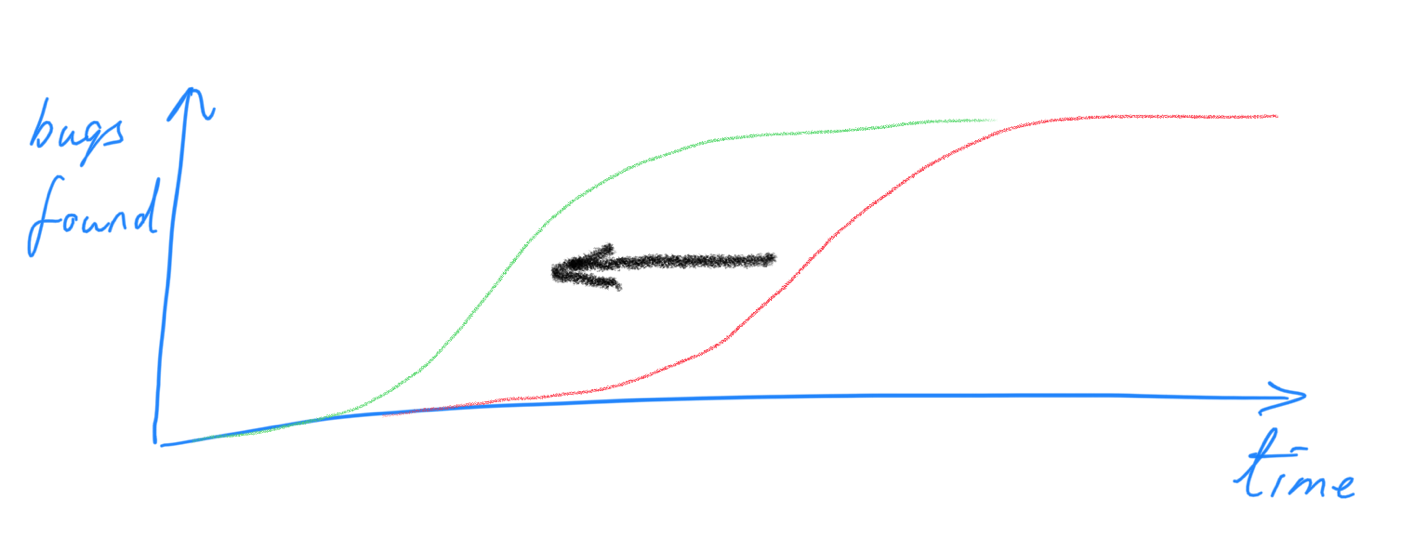Retrospective

A usability project …
The project was primarily a usability project: looking for ways to make it easier for developers to use the tools created by the formal verification community. We wrote a paper with usability researchers about the issues we anticipated and the project plan called for a series of case studies and pilots to figure out where the benefits lay and then to work with development teams to measure that benefit. The hope was that, if that benefit was large enough and achievable by enough developers, it would justify the necessary investment in improving the tools, supporting the tools, creating training materials, etc.
… that started by developing tools
Before you can do a usability case study, you need to have something for people to use. The only problem was that, when we started, the tools available were quite limited: they could only handle small programs with limited dependencies. A particular problem was that many tools could not handle features found in real Rust crates like command line arguments and SIMD intrinsics so we spent most of the first year extending KLEE, writing tools, writing libraries, etc. to create tools good enough to let us do the case studies and run pilots.
After a year’s work, the tools and our understanding are getting close to being good enough to start the case studies. For example, we could apply the tools to CoreUtils and to Rust for Linux. In both cases though, we hit rough edges in the tools that made it too hard to actually try verifying the code. A little more work is needed.
Using “shift left” …
We had a fairly unusual goal for a formal methods project
Our goal was to make developers more productive by using tools and techniques from the formal verification community.
This is not the usual kind of goal for a formal methods project. It is much more common to pitch formal as a way to dramatically and measurably improve quality at the cost of reduced developer velocity. That is, it will take you longer but the result will be better.
The way that we hoped to improve developer velocity is through a “shift left” process. The name “shift left” is a reference to the graphs used by project managers to think about when the product is ready to release. If you plot the number of bugs found against time, you know that your product cannot be released if you are still finding a significant number of bugs every week. If you want to release earlier, the most effective thing to do is to find the bugs earlier. That is, to shift the bug curve left.

Finding the bugs earlier has two benefits. The most obvious is that the bug curve will flatten out sooner. The more important benefit is that we all know that the cost of a bug increases with time: the longer the code sits in your system, the more impact it will have on the rest of the system and the harder it will be to fix the bug.
Rust already helps with this: its combination of static checks, dynamic checks, better API design and less footguns in the language design means that many bugs are caught as the code is typed into your editor/IDE or when you first build the code or when you first run it. Rust’s emphasis on testing in the book, in tools and in the open source community further helps find bugs earlier.
Our belief is that formal verification tools and techniques have the potential to find bugs even earlier: pushing the bug curve even further to the left. And, when you can prove the absence of (certain classes of) bugs, you also reduce the uncertainty about whether the bug curve has flattened out yet.
… to drive adoption
We set ourselves a very ambitious target
Our target was to get 50% of Rust developers at Google to use our tools to make themselves more productive.
Why 50%?
One reason is that it is useful to set ambitious targets: it pushes you harder, you architect your system so that it can scale, and it forces you to focus on the summit instead of getting lost in the foothills. But, to be honest, even 10% would be an ambitious target that we could be happy to achieve.
The problem with a target of 10% is that it is important to think about who that 10% are. Is it just the early adopters? Is it just people who have been taught formal methods at university? If we assume some distribution on developer ability (whatever you think ability means), are we just targeting the top 10% of developers?

The advantage of a target like 50% is that there is no way to cheat: we have to target the median developer. In the worst case, the distribution of users is like this.

In the best case, the distribution is like this.

And, what we expect is something somewhere between the two.
Achieving a distribution like this is critical to long-term adoption of formal methods into the practice of industrial software engineering. I don’t think it can be achieved by targeting the most difficult or the most critical of projects or by targeting the most receptive, best trained or smartest developers. I think it can only be achieved by targeting all developers.
Testing vs bug-hunting vs proofs: why not both?
Our goal was to create a continuum of verification options that all implement the same interface: allowing you to choose the right one for what you are doing. If you just wrote some code, you might start by fuzzing it for some quick feedback or using a symbolic execution tools like KLEE to hunt for bugs. But if you are about to submit the code for code review, you might want to prove that the code is correct.
We have used KLEE as our primary tool during this project because the research team that developed KLEE are very supportive to people using and extending their tool and because KLEE is a mature, robust tool that can handle larger programs.
But KLEE is primarily a tool for bug-hunting so we also spent time working with Crux-MIR, SeaHorn, MIRAI (see this branch), and Rust Model Checker (RMC) (see this branch). These tools put more emphasis on proving properties of the code than on finding bugs so they are an essential part of the goal of building a continuum of tools that support multiple levels of assurance, scalability, ease of use, etc.
Contributing to Rust verification
Everyone benefits if Rust has a great formal verification story. If there are great tools, developers can build better software. If popular crates are verified, we can be more confident in any software that depends on those crates. If verification helps drive Rust adoption in the systems that society depends on on a daily basis, we make the world a better place. etc.
So our goal has always been to contribute to the Rust verification community and to try to complement the efforts of others. All the code we wrote is dual licensed to make it easy to incorporate into other tools. The SIMD emulation library was written with the intention that any other Rust verification tool would be able to use it. The blog posts on this website are written to help other tool builders understand the problems we hit and the way that we solved them.
The end
We are proud of the work we have done in this project and we hope that others will be able to pick up what we have done and run with it.
Enjoy!
Alastair Reid
Shaked Flur
-
I am, of course, oversimplifying when I say that timing is the issue. There’s a number of other factors in closing the project but they mostly come down to how much work there was to do and how many people there were to do it. Which is really just another way of saying “timing”. ↩
The opinions expressed are my own views and not my employer's.